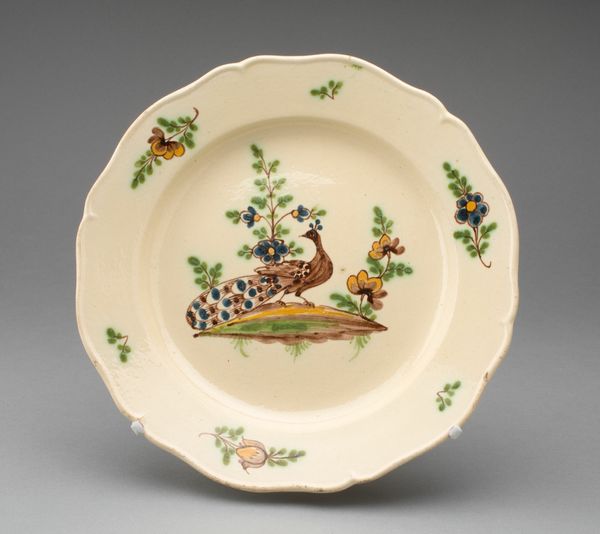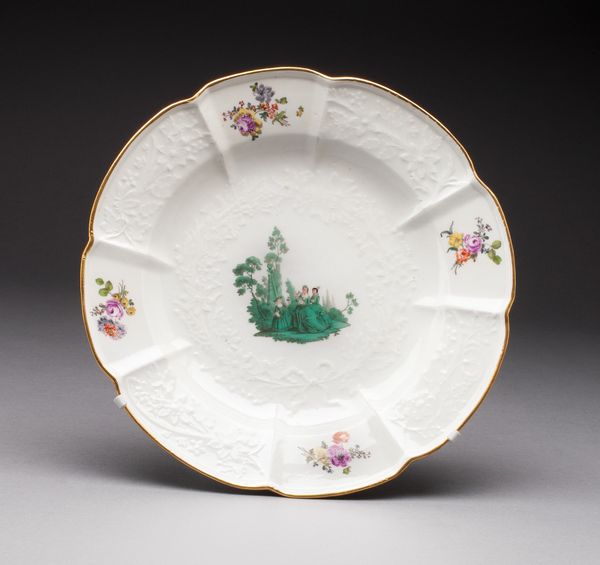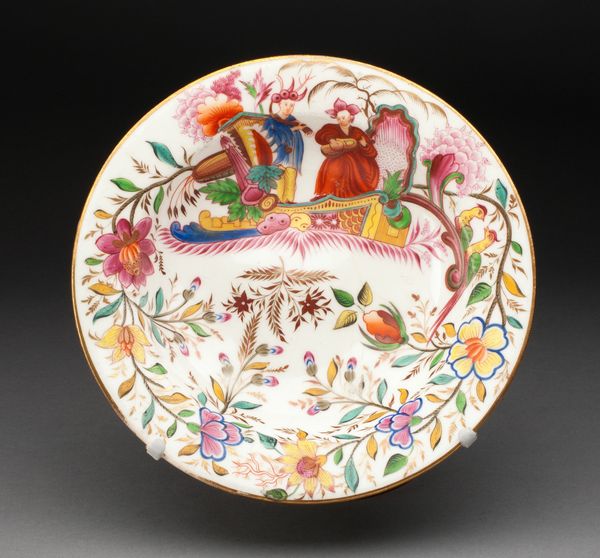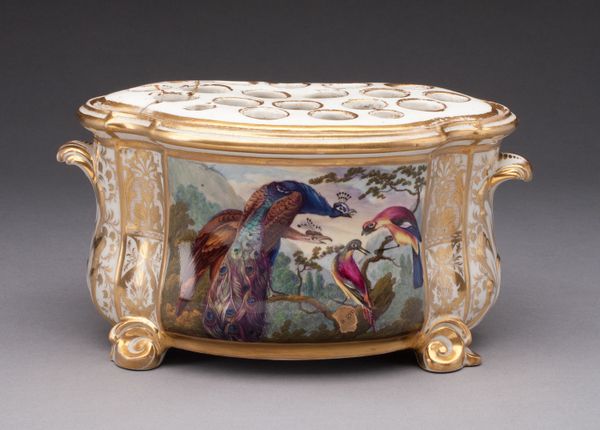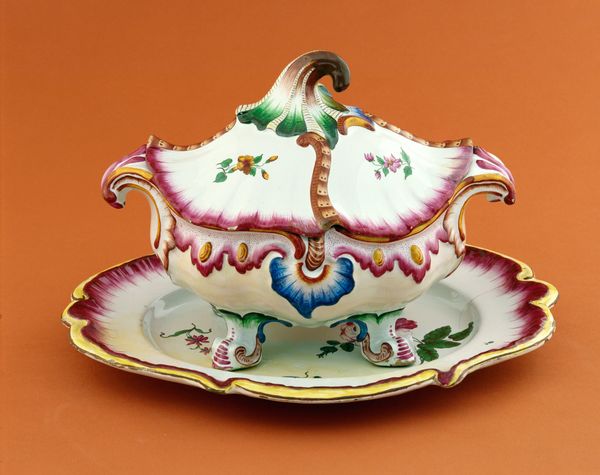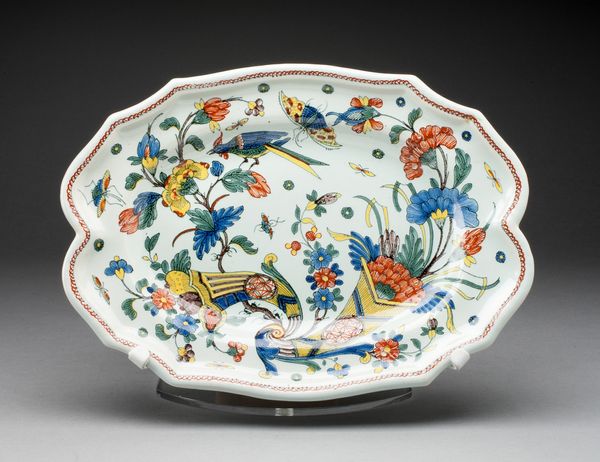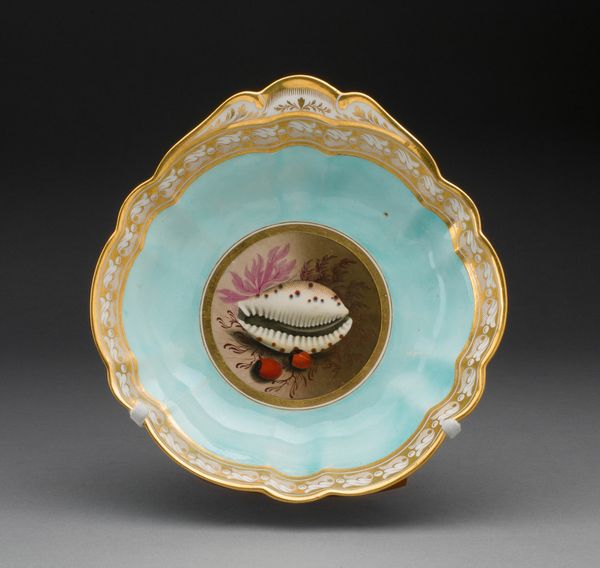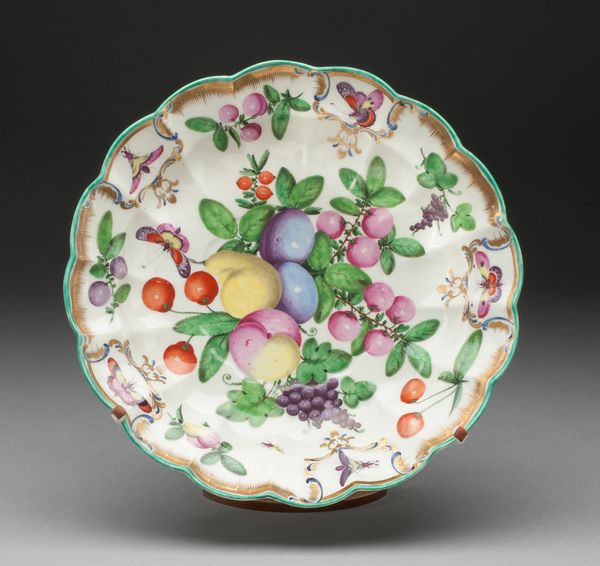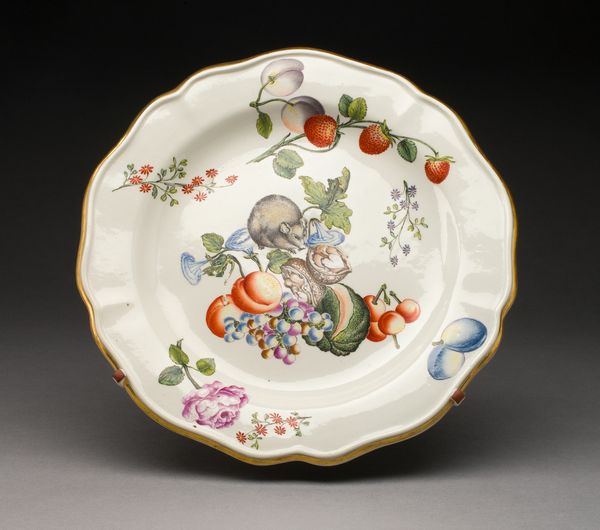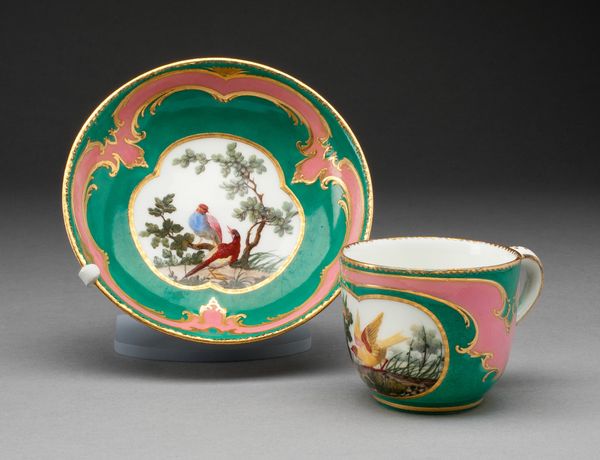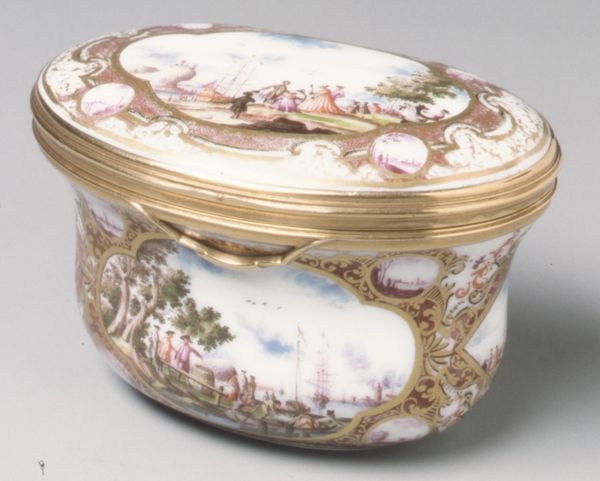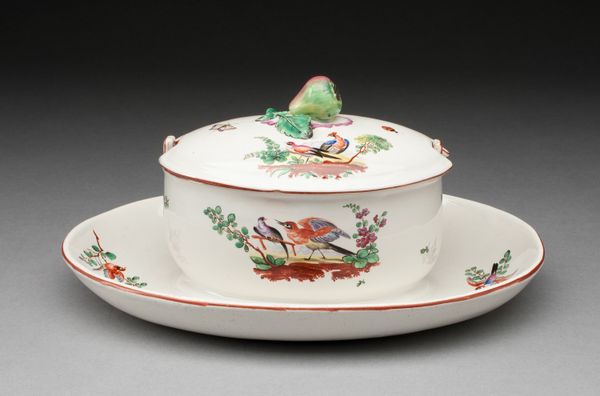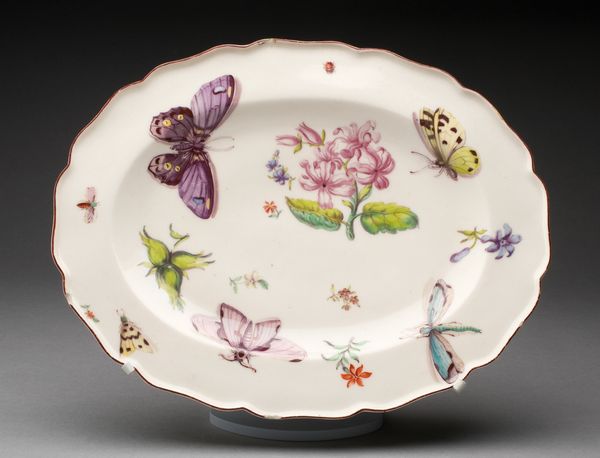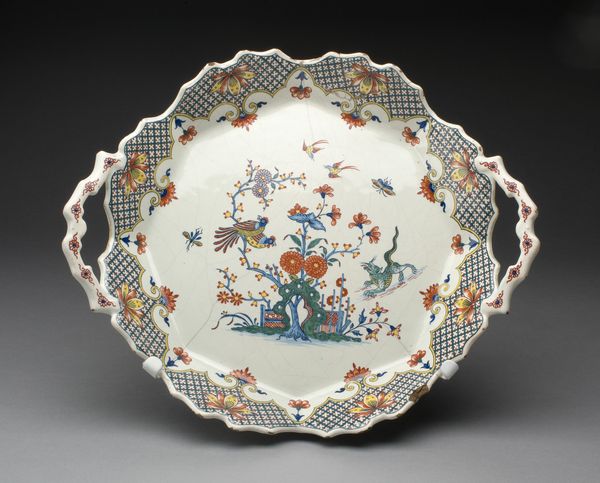
ceramic, earthenware
#
ceramic
#
earthenware
#
england
#
decorative-art
Dimensions: 7 3/4 x 15 5/8 x 11 3/4 in. (19.69 x 39.69 x 29.85 cm)
Copyright: Public Domain
This game pie dish was produced by Minton's Pottery and Porcelain Factory, using molds and hand-applied decoration. The dish is made of earthenware, decorated with vibrant glazes. This was a popular technique in the Victorian era, which aimed to mimic the appearance of natural materials like wood and foliage. Notice how the dish is shaped like a tree stump, complete with textured bark and woodland creatures. The molded forms give a sense of mass production, while the hand-painted details add a touch of artisanal skill. Consider the immense labor involved in creating such a piece. From the initial design and mold-making to the throwing, firing, glazing, and painting, it would have been a team effort. These pieces were designed for middle class or wealthy consumers, who could afford to purchase elaborate serving dishes. Ultimately, this game pie dish is a fascinating example of how industrial techniques can be combined with artistic skill to create objects that are both functional and decorative, blurring the boundaries between art, craft, and design.
Comments
minneapolisinstituteofart over 1 year ago
⋮
This whimsical, decorative serving dish was designed to complement a meal featuring wild game. A staple of Victorian households, this type of ceramic vessel was known as majolica ware, characterized by a dynamic blend of exuberant modeling and rich color glazes. Modeled as the stump of a tree, this game dish features naturalistic ducks and foxes set against leaves and ferns; a mushroom finial completes the playful illusion. Tureens such as these were sold with detachable ceramic liners in which pigeon pie or similar dishes were prepared or cooked. The majolica dishes themselves were intended only as ornamental serving dishes.
Join the conversation
Join millions of artists and users on Artera today and experience the ultimate creative platform.
